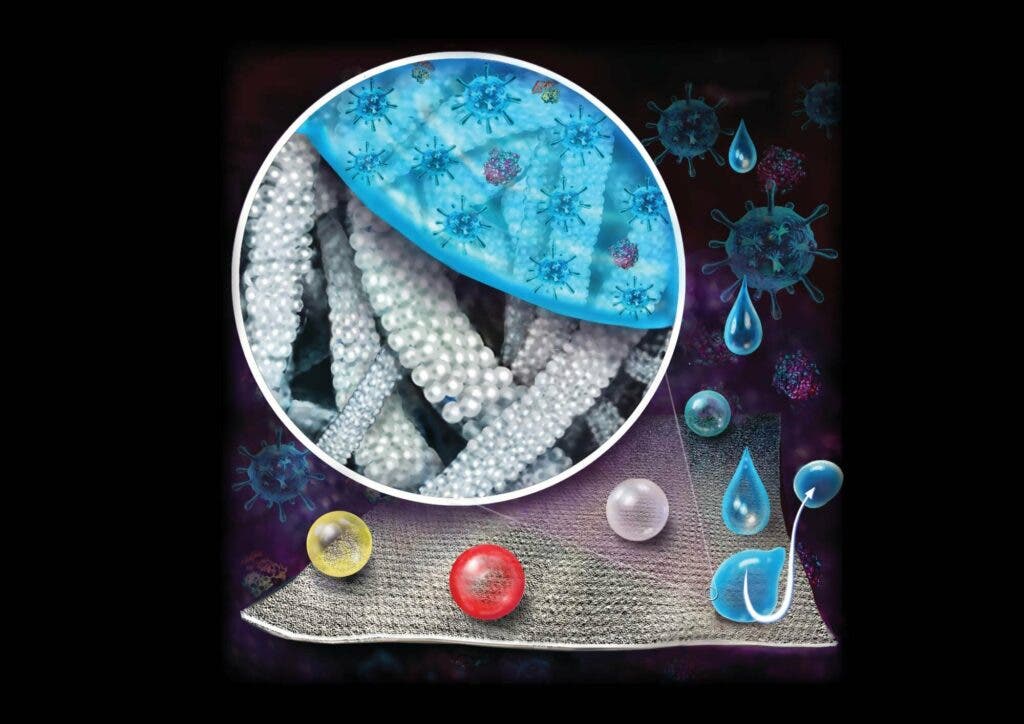New research at the University of Pittsburgh Swanson School of Engineering has created a textile material that can repel liquids such as blood or saliva and prevent viruses from adhering, to boot.

The team hopes that their work can lead the way to improved personal protective equipment (PPE) such as masks or gowns to keep both doctors and patients safe.
Keeping the bugs out
“Recently there’s been focus on blood-repellent surfaces, and we were interested in achieving this with mechanical durability,” said Anthony Galante, a Ph.D. student in industrial engineering at Pitt and lead author of the paper. “We want to push the boundary on what is possible with these types of surfaces, and especially given the current pandemic, we knew it’d be important to test against viruses.”
PPE is at a premium throughout the world right now, but our current gear isn’t the best it could be. The textiles used in gowns and other similar material does eventually soak up viruses and bacteria, and spreads them as medical personnel go about their work.
The material created at the LAMP Lab should provide better viral insulation than currently-available textiles, while also allowing for medical equipment to be used for longer because it doesn’t soak up pathogens — which will also help with shortages.
The coating they developed is resistant to ultrasonic washing, scrubbing, and scraping, so it doesn’t lose efficiency when worn or cleaned. Other similar coatings that are available today aren’t resistant in the same way, which limits their lifetime.
“The durability is very important because there are other surface treatments out there, but they’re limited to disposable textiles. You can only use a gown or mask once before disposing of it,” said Paul Leu, co-author and associate professor of industrial engineering, who leads the LAMP Lab.
“Given the PPE shortage, there is a need for coatings that can be applied to reusable medical textiles that can be properly washed and sanitized.”
The team tested their coating through tens of ultrasonic washing cycles, thousands of rotations with a scrubbing pad, and scrapings with a razor blade, and reported that the material remained just as effective after every test.
Then they examined how efficiently it can repel human adenoviruses 4 and 7, which cause acute respiratory disease and conjunctivitis — and it successfully prevented these from adhering to the textile, as well.
“Adenovirus can be inadvertently picked up in hospital waiting rooms and from contaminated surfaces in general. It is rapidly spread in schools and homes and has an enormous impact on quality of life—keeping kids out of school and parents out of work,” said Robert Shanks, the Director of Basic Research at the Charles T. Campbell Microbiology Laboratory, who collaborated on the research.
“This coating on waiting room furniture, for example, could be a major step towards reducing this problem.”
Although the findings so far are encouraging, the team has yet to test their coating against the coronavirus, but they say that this is the next step in their research.
The coating is applied using drop-casting, a method that saturates the material with a solution from a syringe and applies a heat treatment to increase stability. The team is also working on adapting it for use through spraying or dipping to enable its use for mass-production of larger items such as gowns.
The paper “Superhemophobic and Antivirofouling Coating for Mechanically Durable and Wash-Stable Medical Textiles,” has been published in the journal ACS Applied Materials and Interfaces.









